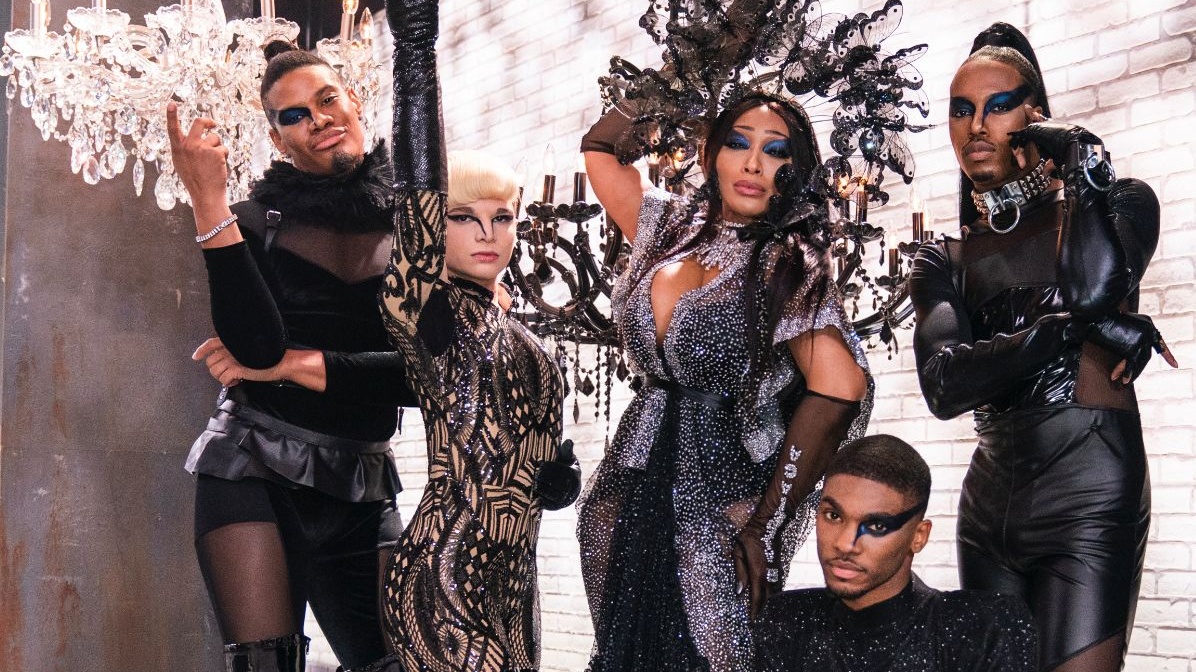As the world comes together this June to collectively pay homage to the LGBTQ+ community and its contributions to culture as we know it, it’d be remiss not to shine a light on ballroom culture.
For those who are unfamiliar, ballroom is a subculture within the LGBTQ+ community where predominantly Black and brown community members compete or “walk” for prizes. With its origins rooted in New York City, the world has been able to snag glimpses of this community, whether by way of the Emmy-nominated series Pose or most recently, The House of Balenciaga on HBO series Legendary.
The House of Balenciaga, founded in 2002, appeared as contestants on season two of Legendary. They made headlines through their innovative storytelling by way of impressive stage theatrics, costumes, and top-tier choreography. Dazzling audiences week after week, the House quickly went on to become even more of a household name by adding to its already impressive resume.
The House of Balenciaga sat down with Blavity News to set the record straight on ballroom and its integral role in LGBTQ+ culture.
While Legendary is a reality show in which several houses compete against one another, seemingly embodying ballroom culture, members of The House of Balenciaga feel that it didn’t capture the true essence of ballroom.
“I think it focuses on something that everyone in the world can relate to, dancing,” Shannon Balenciaga, House mother, said. “My house, The House of Balenciaga is incorporated of all voguers. So when it was time for them to go out and compete in real ballroom challenges, they succeeded because of that.”
For House father, Harold Balenciaga, the true essence of ballroom culture is actually captured behind the scenes as opposed to what viewers may see in front of the camera.
“In all fairness to Legendary, it would be difficult to capture the totality of ballroom in 10 weeks,” Balenciaga said. “There’s a lot that happens behind the scenes such as house members supporting one another, work that houses do in the community whether it’s feeding the homeless or voter registration drives.”
The FX series Pose has made headlines for its portrayal of ballroom culture and its familial aspect that many may not know is at the heart of ballroom culture. According to Harold Balenciaga, Pose’s portrayal of the period in which it was set, was accurate.
“A lot of what I saw early on in Pose, was realistic and reflective of things that we saw in the village, in the pier and life in New York City,” Harold said. “The one thing that I do appreciate about Pose is that there were a lot of feel-good stories as the show came to an end. It didn’t leave everyone downtrodden and left in a small apartment. Here was an opportunity to tell the story and basically, individuals were able to glow up.”
On the topic of inclusion, Shannon feels it is important for people to understand that the ballroom community is one that is welcoming to all.
“I love that the ballroom is LGBT friendly but it’s not only that,” Shannon said. “I don’t like that people only just think that because ballroom opens its arms to everybody. You have to be very careful not to exclude people from this art form because they have been the ones that built it up as well.”
Spanning almost two decades, it’s common knowledge, inside and outside the ballroom, that the House of Balenciaga has built a legacy of absolute fabulousness whether it be worldwide acclaim or material prizes. A true testament of success to the house is the familial aspect that allows members to build relationships with one another and fosters an environment of love and support.
“You go where you’re comfortable and where it feels like home,” Cha Cha Balenciaga, another House member, said. “When you’re able to choose it, it can be better than blood. You obviously chose it more than likely because it gives you warmth, comfort, and support.”
The House of Balenciaga has maintained a legacy of uplifting each other and setting a standard of excellence, both of which will not be ending anytime soon.
“I’m not in competition with anybody, I don’t judge people. I don’t do all of that, I just do me,” Shannon said. “Sometimes that confidence can rub people wrong. They cannot understand it, they want to be a part of it and sometimes everybody can’t be apart of it. It’s always been a standard to uplift. Like Michelle Obama said, ‘When they go low, we go high.’”
